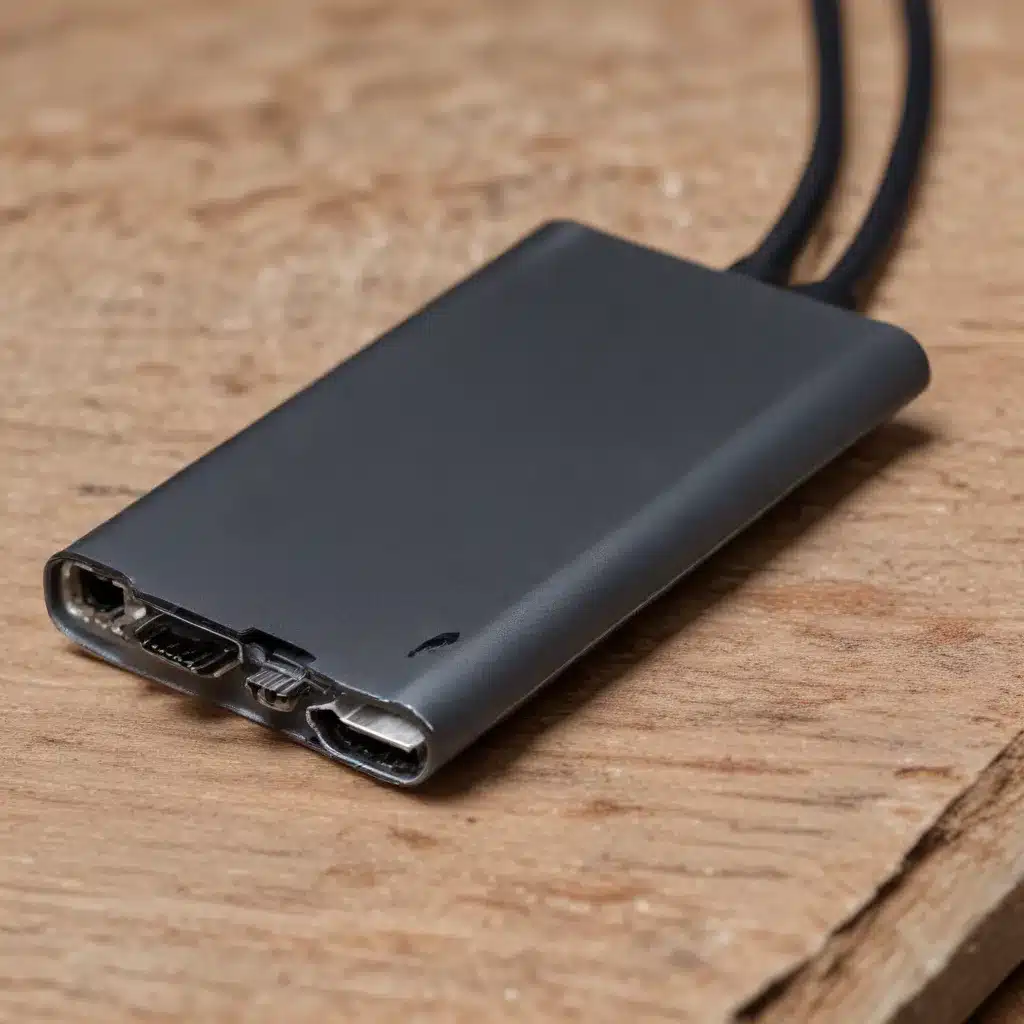
As an experienced IT professional, I’ve encountered countless issues with USB-C ports on various devices, from laptops to smartphones. This ubiquitous connector has revolutionized the way we charge and transfer data, but it’s not without its challenges. In this comprehensive guide, I’ll delve into the common problems associated with USB-C ports and provide practical solutions to help you get your devices back in working order.
Understanding the Fragility of USB-C Ports
The transition from the traditional USB-A connector to the more compact and versatile USB-C has been a game-changer, but it has also brought about some unique challenges. One of the primary issues is the inherent fragility of the USB-C port itself.
The small size of the USB-C connector, combined with the increasing demands for power delivery and data transfer rates, has put a significant strain on the physical structure of the port. As a result, we’ve seen a rise in reports of USB-C ports becoming loose, unreliable, or even failing entirely. This can be particularly frustrating when your laptop or phone suddenly stops charging or connecting to peripherals.
Identifying the Causes of USB-C Port Failures
There are several factors that can contribute to the failure of USB-C ports, and understanding these causes can help you better address the problem.
-
Frequent Plugging and Unplugging: The repeated insertion and removal of USB-C cables can gradually wear down the port’s internal components, leading to a loss of the tight fit and reliable connection.
-
Dust and Debris Buildup: USB-C ports are susceptible to the accumulation of dust, lint, and other small particles, which can interfere with the port’s ability to make a secure connection.
-
Mechanical Damage: Dropping a device or applying excessive force when inserting a cable can physically damage the USB-C port, leading to permanent issues.
-
Manufacturer Defects: In some cases, the USB-C port may be poorly designed or manufactured, resulting in inherent weaknesses that manifest over time.
-
Cable Quality: Subpar or incompatible USB-C cables can also contribute to connection problems, as they may not provide the necessary power or data transfer capabilities.
Troubleshooting and Repairing Faulty USB-C Ports
If you’re experiencing issues with your USB-C port, there are several steps you can take to troubleshoot and potentially fix the problem.
Cleaning the Port
One of the simplest solutions is to clean the USB-C port thoroughly. Use a small, non-metallic tool, such as a toothpick or a precision screwdriver, to gently remove any accumulated dust or debris. Be extremely careful not to damage the delicate port components.
Replacing the USB-C Cable
If the issue persists, try using a different, high-quality USB-C cable. Ensure that the cable is compatible with your device and can handle the necessary power and data requirements. Avoid using cheap or generic cables, as they may not provide a reliable connection.
Replacing the USB-C Port
In more severe cases, where the port is physically damaged or the connection remains unreliable, you may need to replace the USB-C port itself. This is a more complex repair that typically requires specialized tools and technical expertise. If you’re not comfortable performing this task, consider seeking the assistance of a professional IT service provider.
Protecting USB-C Ports
To help prevent future USB-C port issues, it’s essential to take steps to protect the port:
- Use Port Covers: When your device is not in use, keep the USB-C port covered with a protective cap or plug to prevent the accumulation of dust and debris.
- Handle with Care: Avoid excessive force when inserting or removing USB-C cables, and be mindful of not dropping or subjecting your device to sudden impacts.
- Invest in Reliable Accessories: Choose high-quality, well-reviewed USB-C cables and adapters to ensure compatibility and durability.
The Future of USB-C Connectivity
Despite the challenges associated with USB-C ports, this connector is here to stay. The European Union has mandated the use of USB-C for charging devices, and many manufacturers have embraced the technology as the standard for data transfer, video output, and power delivery.
While the issues with USB-C ports may seem concerning, it’s important to note that the overall design and implementation of the connector have been continuously improved. Manufacturers are working to address the fragility concerns and develop more robust USB-C port solutions.
At IT Fix, we stay up-to-date with the latest trends and advancements in technology, including the evolution of USB-C. Our team of experienced IT professionals is dedicated to providing practical solutions and insights to help you maintain your devices and stay productive.
If you’re experiencing persistent issues with your USB-C ports, don’t hesitate to reach out to our experts at IT Fix. We’re here to help you troubleshoot, repair, and protect your valuable devices, ensuring that you can continue to enjoy the benefits of this revolutionary connectivity standard.
Conclusion
The transition to USB-C has brought about significant improvements in device connectivity, but it has also introduced some unique challenges. By understanding the causes of USB-C port failures, employing effective troubleshooting techniques, and taking proactive steps to protect your devices, you can overcome these issues and continue to enjoy the versatility and convenience of this ubiquitous connector.
Remember, the IT Fix team is always here to provide expert guidance and practical solutions to help you get your devices back in working order. Don’t hesitate to reach out if you encounter any USB-C port problems or have questions about maintaining your technology.












